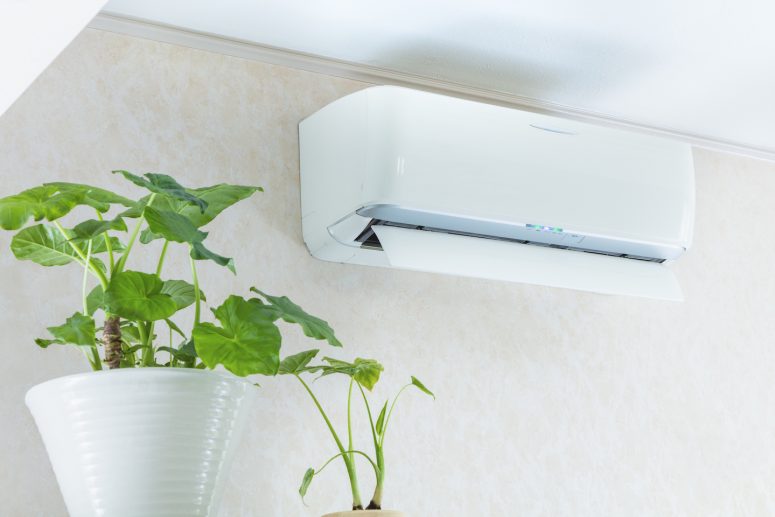
Your air conditioner has a drain line. Also referred to as a condensate drain line, the drain line is usually connected to the drain pan found beneath the air handler. Drain line-related problems can potentially have a detrimental impact on the functionality of your unit. The problem usually starts with leakage and can quickly progress to water damage, mould growth and many more. Common signs of a clogged condensate drain line include:
- Mould growth: The presence of mould growth around the air conditioner unit or in the drip pan indicates a clogged drain line.
- Water damage: If there are visible signs of dampness around your unit’s fan or generally around the air conditioner, just know that there could be a leak and a clogged drain line is to blame.
- Dripping water: If there is standing or dripping water around your air conditioner, this could be a tell-tale sign that your drain pipe is blocked.
- Filled drip pan: If you aren’t seeing any dripping water, your drip pan is certainly full and this implies that water isn’t draining as expected and this can only be attributed to a clog in the drain line.
All the moisture accumulated inside your air conditioner as a result of condensation usually gets stored in the drain pan. The primary function of the condensate drain line is to channel out this collected water to allow your AC unit to operate optimally. There are numerous reasons behind the clogging of air conditioner drain lines. However, the major culprits include; mould growth inside the drain line, corrosion which results in the build-up of particles inside the drain line, insect or rodent infestation in your drain line. Also, dander, dust, dirt, and debris can find their way into your drain line. With time, they can collect together to form large particles large enough to cause a drain line blockage.
Can you unblock a clogged drain line?
The prospect of unblocking a clogged drain line is not only a daunting and intimidating task but one characterized by lots of complexity. This is why you would want to hire a professional technician to help you out. This implies that your first line of defence should be to contact an air conditioner service provider to help you handle the situation.
However, if you are a DIY daredevil, there are steps to follow to unblock the condensate drain line. So, in this section, let us give you a few tips on how to unclog your AC drain pipe. It is imperative to note that this procedure is only recommended for smaller drain clogs.
- Turn off the power to the air conditioner: Just like any other electrical repair job, the first step is always to turn off the electrical power connection. In this case, you should turn off the power at the breaker and your thermostat.
- Locate and access the drain line: It is usually located outdoors, closer to the condenser unit. Next, you will need to find the point of access to your drain line. Check out for a T-shaped spot featuring a cap that covers the drain’s top. Remove the cap and examine if there is a blockage.
- Put on your gloves and remove any visible object that seems to block the drainpipe. However, if the clog seems to be too far, proceed to the next step.
- Try clearing the drain line using positive air pressure or suction pipe: Try to vacuum the pipe from both ends and see if the problem gets solved. Alternatively, you may use an air compressor to blast some air into the pipe to help blow out the clog. And once the condensate pipe is clean and clear, pour some white vinegar through it to help kill all the remaining algae and mould to prevent any future clogging incidences.
As we previously mentioned, this type of air conditioner repair project is best left to the professionals. Air conditioner repair experts not only boast the technical know-how needed to handle the job effectively but have the right tools and equipment. What’s more, they will provide you with effective air conditioner maintenance tips to ensure your unit doesn’t suffer any future clogging issues.
